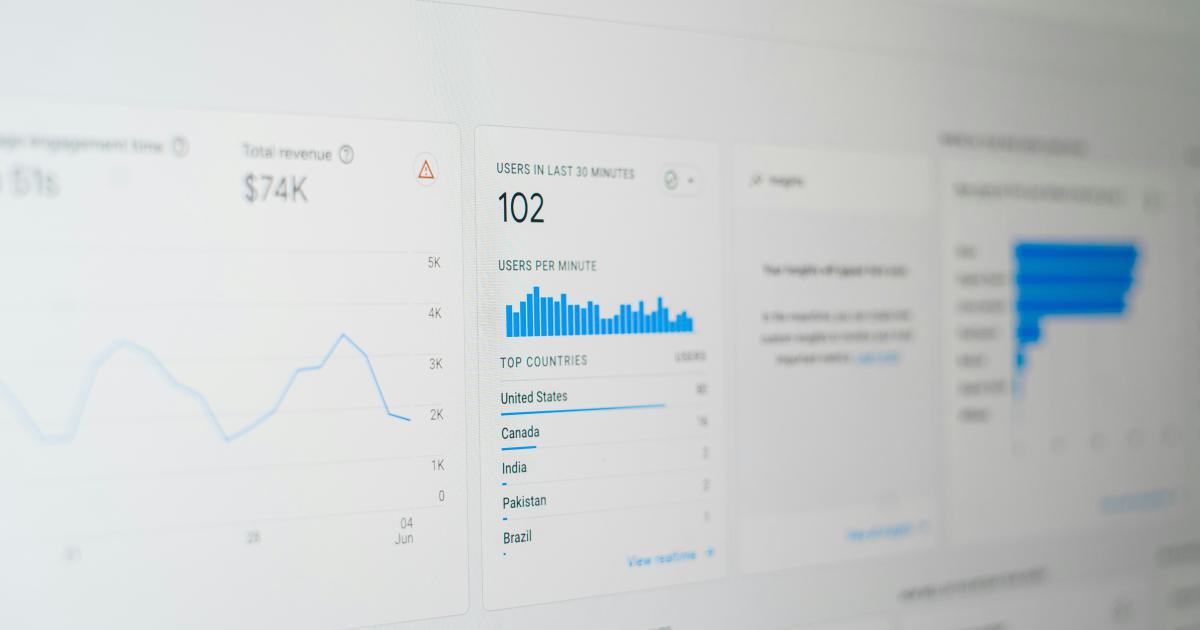Resource Link Building Techniques: Get Valuable Backlinks


Introduction to Resource Link Building
Link building is a crucial aspect of search engine optimization (SEO) that can significantly impact your website's visibility and ranking in search engine results. Among the various link building strategies, resource link building has emerged as a highly effective approach. Resource link building involves creating and promoting valuable, informative content that other websites will want to link to, thereby increasing your website's authority and driving relevant traffic.

In this comprehensive article, we'll explore the power of resource link building and delve into the specific techniques and strategies you can use to build high-quality backlinks and elevate your online presence.
Understanding the Importance of Backlinks
Backlinks, or inbound links, are links from other websites to your own. These links are like digital endorsements, signaling to search engines that your content is valuable and worth ranking highly. Websites with a larger number of high-quality backlinks tend to rank higher in search engine results pages (SERPs), as search engines perceive them as more authoritative and trustworthy.

Backlinks play a crucial role in the following ways:
Improved Search Engine Rankings
Search engines, such as Google, use backlinks as a significant ranking factor. The more high-quality backlinks your website has, the more likely it is to appear at the top of search results for relevant queries.
Increased Website Authority
Backlinks from reputable, high-authority websites can significantly boost your website's perceived authority and credibility, making it more trustworthy in the eyes of both search engines and users.
Enhanced Referral Traffic
Backlinks can drive referral traffic to your website from the pages that link to you. This can lead to increased visibility, engagement, and potential conversions.
Boosted Domain Authority
Building a diverse and robust backlink profile can contribute to the overall domain authority of your website, making it more competitive in your industry or niche.
Defining Resource Link Building
Resource link building is a strategic approach to acquiring backlinks by creating and promoting valuable, informative content that other website owners and content creators find useful and are willing to link to. This type of link building focuses on providing genuine value rather than simply trying to manipulate search engines.

The key elements of resource link building include:
Identifying Relevant Industry Resources: Conducting thorough research to identify the types of content and resources that are in high demand within your industry or niche.
Creating Exceptional Content: Developing comprehensive, well-researched, and engaging content that addresses the needs and interests of your target audience.
Outreach and Promotion: Actively reaching out to relevant website owners, bloggers, and industry influencers to promote your content and encourage them to link to it.
Relationship Building: Fostering genuine connections and collaborations with other industry players, leading to mutually beneficial linking opportunities.
By implementing effective resource link building strategies, you can attract high-quality backlinks that not only improve your search engine rankings but also drive targeted, relevant traffic to your website.
Identifying Relevant Industry Resources
The first step in successful resource link building is to identify the types of content and resources that are in high demand within your industry or niche. This research phase is crucial, as it will guide the creation of your own valuable content and inform your outreach efforts.

Here are some key strategies for identifying relevant industry resources:
Competitor Analysis
Examine the backlink profiles of your competitors to identify the types of content and resources they are linking to. This can provide valuable insights into the content preferences and needs of your target audience.
Industry Influencer Research
Identify influential bloggers, industry experts, and content creators within your niche. Analyze the types of content they produce, share, and link to, as these are likely to be in high demand.
Keyword Research
Utilize keyword research tools to uncover the most searched-for and relevant topics within your industry. This can help you identify content gaps and opportunities to create valuable resources.
Online Community Engagement
Participate in online forums, industry-specific communities, and social media groups to understand the pain points, questions, and interests of your target audience. This can inform the type of content you should create.
Trending Topic Identification
Monitor industry trends, news, and emerging topics to identify areas where your audience is currently seeking information. This can inspire the creation of timely, relevant resources.
By thoroughly researching your industry's content landscape, you can gain a deeper understanding of the types of resources that are most valuable to your target audience, setting the stage for the creation of your own exceptional content.
Creating Exceptional Content
Once you have identified the most relevant and in-demand industry resources, it's time to focus on creating exceptional content that will attract backlinks. The key to successful resource link building is to provide genuine value to your audience, rather than simply trying to manipulate search engines.

Here are some best practices for creating exceptional content:
Comprehensive and In-Depth
Strive to create content that is thorough, well-researched, and covers a topic in-depth. Avoid superficial, shallow content and aim to provide a comprehensive, authoritative resource on your chosen subject.
Practical and Actionable
Your content should offer practical, actionable insights and solutions that your target audience can immediately apply to their own situations. Avoid purely theoretical or abstract content.
Visually Appealing
Enhance your content with visuals, such as images, infographics, and videos, to make it more engaging and easier to digest. Well-designed visuals can also increase the shareability and linkability of your content.
Unique and Differentiated
Aim to create content that stands out from the competition by offering a unique perspective, innovative approaches, or valuable insights that are not readily available elsewhere.
Evergreen and Timely
Strive to create content that remains relevant and valuable over time (evergreen content) while also addressing timely industry topics and trends (timely content).
Optimized for Search
Ensure your content is optimized for search engines by incorporating relevant keywords, meta tags, and other SEO best practices to improve its visibility and discoverability.
By focusing on creating exceptional, value-driven content, you'll not only attract backlinks but also establish your website as a trusted and authoritative source within your industry.
Outreach and Promotion Strategies
After creating your valuable content, the next step is to actively promote it and reach out to relevant website owners, bloggers, and industry influencers to encourage them to link to your resources. Effective outreach and promotion are crucial for successful resource link building.

Here are some key outreach and promotion strategies to consider:
Targeted Outreach
Identify websites, blogs, and industry influencers that are likely to find your content useful and relevant. Personalize your outreach messages, highlighting the specific value your resource can provide to their audience.
Guest Posting
Seek out opportunities to contribute guest posts or articles to relevant industry publications and websites. This can help you gain exposure, build relationships, and earn backlinks to your own website.
Influencer Collaboration
Reach out to industry experts, thought leaders, and influencers to explore potential collaborations, such as co-creating content or participating in interviews. This can lead to valuable backlinks and expanded audience reach.
Social Media Promotion
Leverage your social media channels to share and promote your content. Encourage your followers to engage with and share your resources, increasing their visibility and potential for backlinks.
Syndication and Republishing
Explore opportunities to have your content syndicated or republished on other reputable websites. This can expose your resources to new audiences and earn you valuable backlinks.
Broken Link Building
Identify broken links on relevant websites and offer your own content as a replacement. This can be an effective way to earn backlinks while providing value to the website owner.
Resource Page Outreach
Locate industry-specific resource pages, directories, and curated lists, and request that your content be included as a relevant resource.
By combining these outreach and promotion strategies, you can systematically connect with the right people and earn high-quality backlinks that enhance your website's authority and visibility.
Building Relationships and Collaborations
Successful resource link building is not just about creating great content and reaching out to potential linkers. It's also about fostering genuine relationships and collaborations within your industry. This long-term approach can lead to a more sustainable and valuable backlink profile.

Here are some tips for building relationships and collaborations to support your resource link building efforts:
Industry Networking
Actively participate in industry events, conferences, and online communities to connect with other professionals, influencers, and potential collaborators. These personal connections can lead to future linking opportunities.
Reciprocal Linking
Identify opportunities to mutually link to each other's content, as long as the links are truly relevant and valuable to your respective audiences. This can create a mutually beneficial relationship.
Co-Creation and Collaborations
Explore opportunities to co-create content, host webinars, or participate in other joint projects with industry partners. These collaborations can result in cross-promotional backlinks and increased exposure.
Testimonials and Reviews
Provide genuine testimonials or reviews for products, services, or resources offered by other industry players. This can lead to them reciprocating with a backlink to your website.
Thought Leadership Contributions
Position yourself as a thought leader by contributing to industry publications, participating in interviews, or writing guest posts. This can enhance your reputation and lead to backlink opportunities.
Ongoing Communication and Engagement
Maintain open communication with your industry connections, commenting on their content, sharing their resources, and engaging with them on social media. This can help strengthen relationships and foster future linking opportunities.
By building genuine relationships and collaborating with other industry players, you can create a sustainable network of backlinks that not only improve your search engine rankings but also expand your reach and influence within your niche.
Measuring and Analyzing Your Backlink Profile
Effective resource link building requires continuous monitoring and analysis of your backlink profile to ensure that you are acquiring high-quality, relevant backlinks that contribute to your overall SEO success.

Here are some key metrics and strategies to consider when measuring and analyzing your backlink profile:
Backlink Quantity
Track the total number of backlinks your website has acquired over time. While quantity alone is not the sole indicator of success, it can provide valuable insights into the scale of your link building efforts.
Backlink Quality
Analyze the quality of your backlinks by assessing factors such as the Domain Authority (DA) and Page Authority (PA) of the linking websites, the relevance of the content, and the overall trustworthiness of the sources.
Anchor Text Diversity
Ensure that your backlink profile contains a diverse range of anchor text, including branded, contextual, and keyword-rich anchor text. Overly optimized anchor text can raise red flags with search engines.
Backlink Profiles of Competitors
Regularly monitor the backlink profiles of your competitors to identify opportunities for acquiring similar or better-quality backlinks.
Backlink Acquisition Trends
Analyze the trends in your backlink acquisition over time, such as the rate of new backlink growth, the sources of your backlinks, and any significant changes or fluctuations.
Disavow Harmful Backlinks
Regularly review your backlink profile for any low-quality or potentially harmful backlinks, and use Google's Disavow Tool to remove them from search engine consideration.
Backlink Audits
Conduct periodic backlink audits to identify and address any issues or anomalies in your backlink profile, ensuring that it aligns with search engine best practices.
By closely monitoring and analyzing your backlink profile, you can make informed decisions about your resource link building strategies, identify areas for improvement, and maintain a healthy, high-quality backlink profile that supports your overall SEO goals.
Conclusion
Resource link building is a powerful and sustainable approach to improving your website's search engine visibility and driving valuable, targeted traffic. By creating exceptional, informative content, conducting targeted outreach, and fostering industry relationships, you can earn high-quality backlinks that enhance your online authority and credibility.

Remember, the key to effective resource link building lies in providing genuine value to your target audience. Focus on understanding their needs, creating content that addresses those needs, and proactively reaching out to the right people. By following the strategies outlined in this article, you can unlock the full potential of resource link building and take your online presence to new heights.